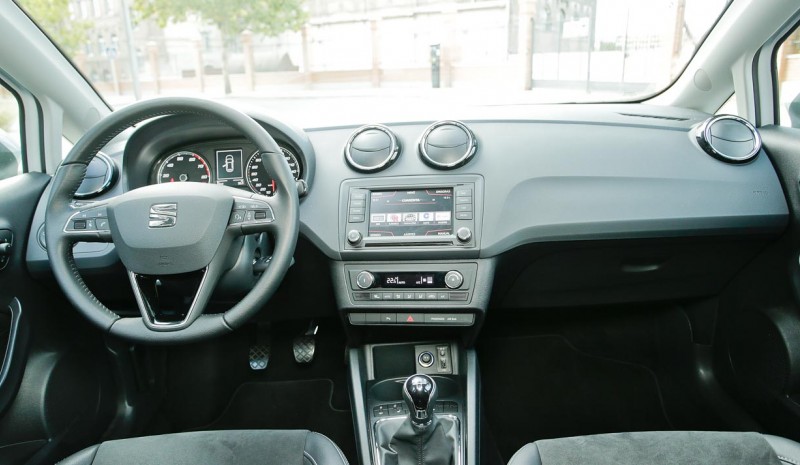Seat Ibiza 1.0 EcoTSI 95 CV: impressions and actual consumption
The Seat Ibiza gasoline-powered 3-cylinder 1.0 TSI exceeds dynamically his brother 90 hp 1.4 TDI. Which of the two most interested in? We tested it.




With figures “on the table” There is no doubt that this little tricilíndrico propeller 95 hp 1.0 EcoTSI Seat Ibiza gives the capacity acceleration above its diesel equivalent, with a thrust at low speeds almost immediately face a greater response time of the 1.4 TDI. Another advantage to this small block is its further refinement, It is difficult to find on the market a three-cylinder in arriving less vibration inside.
The real question is if you really compensates purchase versus 1.4 TDI 90 hp, assuming that the most important was the fuel consumption. He Ibiza 1.0 EcoTSI 95 hp It has been formed with 5,2 l / 100 km highway and 6.2 l / 100 km city driving, yielding an average 5,6 l / 100 km, above only 7/10 compared to Diesel. Given these data and 1,500 euros overpricing that has the 90 hp 1.4 TDI will be necessary travel at least 150,000 km to start saving something on Diesel, without regard to reaching that figure we will have spent more money on maintenance for the diesel version.
 For these reasons and for environmental pressure would not be surprising that before expected some manufacturers to stop marketing some diesel engines in commercial vehicles. Undoubtedly, this version of gasoline and 95 hp is fully recommended even if you are making more than 20,000 km per year, though admittedly still it marketed interesting four-cylinder 1.2 TSI with very little higher consumption and an even lower price.
For these reasons and for environmental pressure would not be surprising that before expected some manufacturers to stop marketing some diesel engines in commercial vehicles. Undoubtedly, this version of gasoline and 95 hp is fully recommended even if you are making more than 20,000 km per year, though admittedly still it marketed interesting four-cylinder 1.2 TSI with very little higher consumption and an even lower price.
Seat Ibiza: feel good car
Not long ago I was up on a Seat Ibiza, and I have to admit I was surprised that the good touch of all its components, even better than the last memory I had left. From the opening and closing of each door to any switch inside denote quality. I think a “round” car, which only improve its habitability in the rear seats and the front seats would provide lumbar adjustment, as they have much support and can become uncomfortable.
